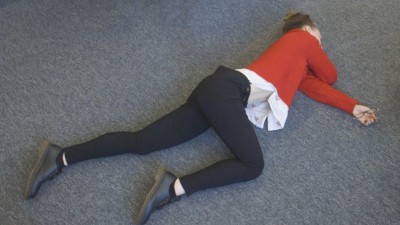Neurodiversity information for parents and young people
About febrile convulsions
- A febrile convulsion is a fit or seizure that can happen when your child has a fever.
- They happen to about 1 in 30 children with a fever. They are most common between 6 months and 6 years of age.
- They often occur on the first day of a feverish illness. They can happen if your child has a mild fever or a severe fever.
- Any illness which causes a high temperature may result in a febrile convulsion. Examples include a head cold or another viral infection.
- Febrile convulsions are not epilepsy.
- A febrile convulsion can feel like a frightening experience. Most children who have one do not need to stay in hospital and can go home.
What happens during a febrile convusion
Your child may experience the following:
- Their whole body may become stiff. Their arms and legs may twitch.
- They may lose consciousness and wet or soil themselves.
- They may be sick and foam at the mouth. Their eyes may roll back.
- Simple convulsions usually last less than 5 minutes.
- Your child may be sleepy afterwards.
- Your child will probably be back to their normal self within a few hours.
Can it happen again?
Yes, your child can have a repeat convulsion.
- 1 in 3 children may have repeat convulsions. This can happen if they become ill with a high temperature. 99% of children with convulsions never have them after they reach school age (5 years).
- Regular treatment to prevent future convulsions is usually unnecessary.
What to do if your child has another febrile convulsion
Stay calm and do the following:
- Put your child in the recovery position. Turn their face to one side to stop them choking. Do this in a safe environment. For example on the floor and away from any objects that might be harmful.

Support your child’s head with their hand. Bend one knee to prevent them rolling onto their stomach.
- Ensure your child’s airway is clear to prevent them from choking. Be careful not to get your fingers caught between their teeth. Do not put anything in your child’s mouth or shake your child.
- Try to time how long the convulsion lasts.
- Video the convulsion if possible, so you can show your GP or healthcare professional.
- If the convulsion lasts for less than 5 minutes, call your GP or NHS 111 if you are worried.
If the convulsion lasts 5 minutes or longer
Call 999 and ask for an emergency ambulance.
Looking after your child if they get another fever
If your child has another fever (high temperature) do the following.
- Keep a close watch on them.
- Do not let them bathe or shower un-supervised.
- Do not let them swim.
- Offer fluids often to make sure they are well hydrated.
- Try to cool them down by removing clothing and encouraging them to drink often.
- Do not try to cool them down by using icy water, or a fan directly on them. This can encourage them to shiver and make their temperature even higher.
- Try giving them paracetamol (for example Calpol) or ibuprofen (for example Nurofen). Always read the medication labels and do not exceed the recommended dose for their age group.
- If your child has another convulsion, follow the steps above in the ‘What can I do if my child has another febrile convulsion’ section.
Contact information
Your nearest Emergency Department (A&E)
or
Paediatrics Admin Team, Monday to Friday, 9 am to 5 pm